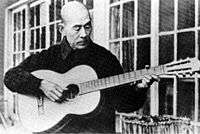Shigeyoshi Inoue
| Shigeyoshi Inoue | |
|---|---|
|
Japanese Admiral Shigeyoshi Inoue | |
| Native name | 井上 成美 |
| Born |
December 9, 1889 Sendai, Miyagi, Japan |
| Died |
December 15, 1975 (aged 86)[1] Yokosuka, Kanagawa, Japan |
| Allegiance |
|
| Service/branch |
|
| Years of service | 1909-1945 |
| Rank | Admiral |
| Commands held |
|
| Battles/wars | |
| Awards | Order of the Rising Sun (1st class) |
| Other work | Vice Minister of the Navy |
Shigeyoshi Inoue (井上 成美 Inoue Shigeyoshi, 9 December 1889 – 15 December 1975) was an admiral in the Imperial Japanese Navy during World War II. He was commander of the Japanese 4th Fleet and later served as Vice-Minister of the Navy. A noted naval theorist, he was a strong advocate of naval aviation within the Japanese Navy.[3] General (Prime Minister) Abe Nobuyuki was his brother-in-law.
Biography
Early career
Inoue was a native of Sendai in Miyagi Prefecture, in the Tōhoku region of Japan. He attended the 37th class of the Imperial Japanese Naval Academy, graduating second out of a class of 179 cadets in 1909. As a midshipman, he was assigned to the cruiser Soya on its 1909 cruise from Dairen to Chemulpo, Chinkai, Sasebo and Tsu. He stayed with Soya on its cruise the following year to Manila, Ambon, Townsville, Brisbane, Sydney, Hobart, Melbourne, Fremantle, Batavia, Singapore, Hong Kong, Makung, and Keelung. On his return, he was assigned to the battleship Mikasa, and then the cruiser Kasuga.
Overseas experience
Shortly after his promotion to ensign on 15 December 1910, he was reassigned to the cruiser Kurama and attended the coronation ceremonies for King George V in London in 1911. In 1912, he returned to school to study latest naval artillery and submarine warfare techniques and was promoted to sub-lieutenant at the end of that year. In 1913, he served on the cruiser Takachiho, followed by the battleship Hiei. He was promoted to lieutenant at the end of 1915, and transferred to the battleship Fusō. Although Fusō participated in operations in World War I against the Imperial German Navy, Inoue was not in any combat situations.
Inoue was given his first command, the dispatch vessel Yodo on 1 December 1917. At the end of 1918, Inoue was appointed military attaché to Switzerland, and ordered by the Navy to learn German. In 1919, he was part of the Japanese diplomatic delegation to the Paris Peace Conference, where this knowledge proved to be useful. In 1920, he was appointed military attaché to France, and was then ordered to learn French. In December 1921, he received a promotion to lieutenant commander, and was permitted to return to Japan.
After serving as executive officer on the Suma in 1923, Inoue enrolled in the Naval Staff College, graduating 3rd in a class of 21 the following year from the 22nd class. On 1 December 1925, he was promoted to commander. Inoue remained in staff positions for the next several years, including an appointment as naval attaché to Italy from 1927–1929, after which he was promoted to captain.
As admiral

On 15 November 1933, Inoue was given command of Hiei. However, his administrative talents could not be overlooked, and he returned to shore duties after slightly over a year and a half. Inoue was a protégé of Admiral Isoroku Yamamoto, and was strongly opposed to the Tripartite Pact with Fascist Italy and Nazi Germany. Inoue was a leader of the "leftist clique" within the Japanese military, which opposed Japan's increasing trend towards fascism and overseas expansionism.
Promoted to rear admiral on 15 November 1935, Inoue was made vice commander of the IJN 3rd Fleet, which covered the China theater of operations in 1939 and further promoted to vice admiral the same year. As with Yamamoto, he was a strong proponent of naval aviation. Inoue was awarded the Order of the Rising Sun (first class) in 1940.
In 1940, Inoue became commander of the Imperial Japanese Navy Aviation Bureau, and submitted his thesis for a radical restructuring of the Imperial Japanese Navy to Naval Minister Koshirō Oikawa early in 1941. He was highly critical of the Navy's shipbuilding programme, with its emphasis on battleships over aircraft carriers. Inoue was given command of the IJN Fourth Fleet later the same year, based out of Truk. He was thus in command of Japanese naval forces during the Battle of Guam and Battle of Wake Island. He subsequently relocated his headquarters to Rabaul for Operation Mo, intended to occupy Port Moresby. However, after the Japanese defeat at the Battle of the Coral Sea in May 1942, he was relieved of his command in October, and returned to Japan to become commander of the Imperial Japanese Naval Academy. He became Vice Minister of the Navy in the closing stages of World War II, was promoted to full admiral on 15 May 1945, and officially retired on 15 October of the same year.
After the war, Inoue became an English and music teacher to children at his house in Yokosuka. The site of his home is now a public park.
His grave is at Tama Reien Cemetery in Fuchū, Tokyo, Japan.
References
Books
- Agawa, Hiroyuki (1986). 井上成美(Inoue Shigeyoshi). Japan: Shinchosha. ISBN 4-10-300414-2.
- D'Albas, Andrieu (1965). Death of a Navy: Japanese Naval Action in World War II. Devin-Adair Pub. ISBN 0-8159-5302-X.
- Dull, Paul S. (1978). A Battle History of the Imperial Japanese Navy, 1941-1945. Naval Institute Press. ISBN 0-87021-097-1.
- Frank, Richard (1990). Guadalcanal: The Definitive Account of the Landmark Battle. New York: Random House. ISBN 0-394-58875-4.
- Fukukawa, Hideki (2000). 日本海軍将官辞典(Nihonkaigun syoukan jiten). Japan: Fuyoshobo Press. ISBN 4-8295-0272-X.
- Morison, Samuel Eliot (2001) [1949]. Coral Sea, Midway and Submarine Actions, May 1942-August 1942, vol. of History of United States Naval Operations in World War II. Champaign, Illinois, USA: University of Illinois Press. ISBN 0-252-06995-1.
- Morison, Samuel Eliot (1958). The Struggle for Guadalcanal, August 1942 – February 1943, vol. 5 of History of United States Naval Operations in World War II. Boston: Little, Brown and Company. ISBN 0-316-58305-7. - Online views of selections of the book:
- Peattie, Mark R., Sunburst: The Rise of Japanese Naval Air Power 1909-1941, Annapolis, Maryland: Naval Institute Press, 2001, ISBN 1-55750-432-6
External links
| Wikimedia Commons has media related to Shigeyoshi Inoue. |
- Naval History via Flix. "Inouye Shigeyoshi". Retrieved 2006-12-08.
- Nishida, Hiroshi. "Materials of IJN: Inoue, Shigeyoshi". Imperial Japanese Navy. Retrieved 2006-12-08.
- Japanese Operations in the Southwest Pacific Area, Volume II - Part I. Reports of General MacArthur. United States Army Center of Military History. 1950. Retrieved 2006-12-08. - Translation of the official record by the Japanese Demobilization Bureaux detailing the Imperial Japanese Army and Navy's participation in the Southwest Pacific area of the Pacific War.
- Wendel, Marcus. "Axis History Factbook". Retrieved 2006-12-08.
- Find-A-Grave
- 井上成美 (Japanese)

